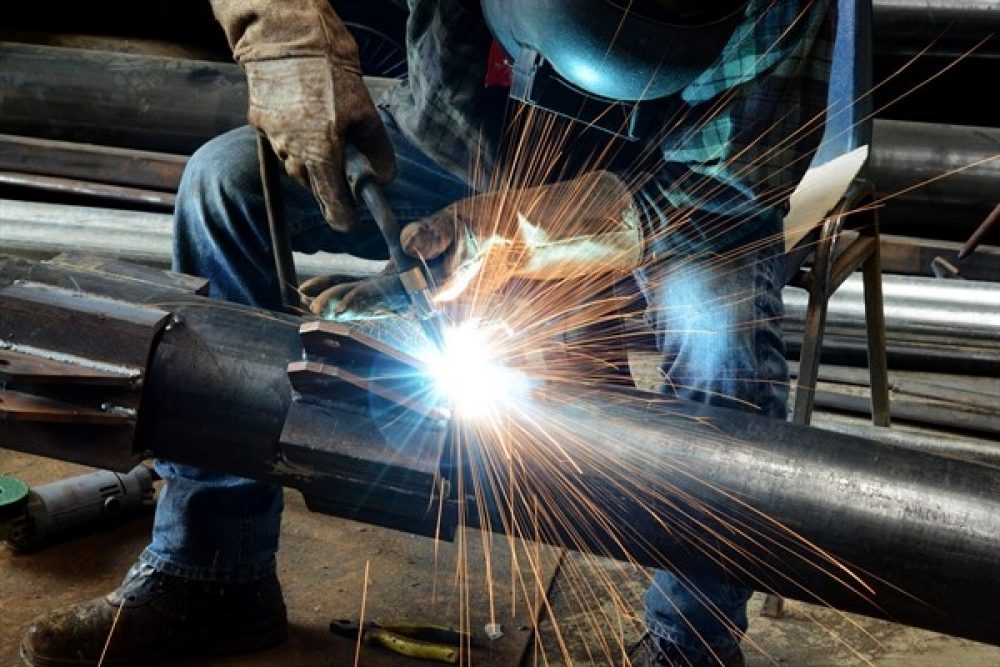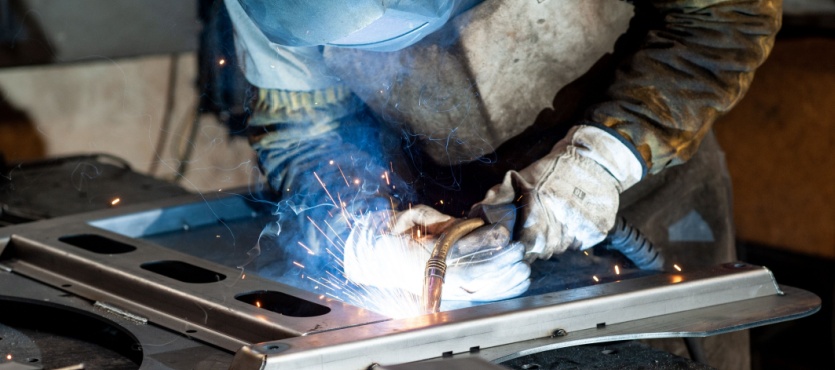Early defect indicators and what Belgrade can do about them
Wiki Article
Usual Welding Fixing Issues and How to Address Them Efficiently
Welding repairs commonly experience an array of concerns that can threaten the integrity of the final product. Typical issues include poor infiltration, porosity, and imbalance, to name a few. Each issue offers unique challenges that require specific strategies for resolution. Recognizing these concerns is essential for welders aiming to enhance their skills and results. This discussion will certainly discover these usual welding repair work issues and reliable methods to address them.Poor Infiltration
Inadequate penetration takes place when the weld metal fails to totally fuse with the base material, leading to weak joints and potential structural failings. This problem usually stems from inadequate warm input, wrong electrode angle, or incorrect welding rate. Welders may experience poor penetration due to a miscalculation of the necessary specifications for a certain product thickness or kind. Furthermore, contamination on the base product's surface can hinder reliable bonding, aggravating the problem. To attend to insufficient infiltration, welders must guarantee suitable settings on their devices and keep a tidy work surface area. Routine inspection of welds is advised to recognize any shortages early, permitting timely improvements and the avoidance of endangered structural integrity in welded assemblies.Porosity
Porosity is a typical problem in bonded joints that materializes as little gas bubbles trapped within the weld steel. This problem can endanger the stability of the weld, bring about minimized strength and possible failure under stress and anxiety. Belgrade Fabrication. Porosity commonly occurs from contamination, dampness, or incorrect welding strategies, which allow gases to run away right into the liquified weld swimming pool. To address porosity, welders should guarantee correct surface prep work, keep a clean working setting, and make use of ideal welding parameters. In addition, choosing the ideal filler material and shielding gas can minimize gas entrapment. Normal inspection and testing of welds can help determine porosity early, assuring timely corrective activities are taken, consequently maintaining the quality and reliability of the bonded frameworkMisalignment
Imbalance in welding can arise from different elements, including improper setup and thermal expansion. Understanding the source is crucial for reliable resolution. Numerous correction techniques are offered to realign components and guarantee structural honesty.Sources of Misalignment
Welding misalignment typically originates from a selection of underlying concerns that can endanger architectural integrity. One main reason is inappropriate fit-up of parts prior to welding, which can cause voids and uneven surfaces. Variations in thermal development throughout the welding procedure can likewise cause distortion, specifically if the materials being joined have different coefficients of development. Furthermore, insufficient securing and fixturing may fail to hold components securely in place, bring about activity during welding. Improperly maintained equipment, including welding makers and tools, may introduce variances in the weld bead, more adding to misalignment. Finally, operator error, stemming from inadequate training or experience, can also play a substantial role in creating misaligned welds.Correction Techniques Offered
Resolving imbalance effectively calls for a mix of corrective strategies tailored to the specific problems at hand. One common method is using jigs or fixtures to hold components in the proper placement throughout welding, ensuring consistent positioning. Additionally, preheating the materials can assist minimize distortion and enhance fit-up. For substantial misalignment, mechanical adjustment strategies, such as utilizing hydraulic jacks or clamps, can be employed to deal with the placement before welding. Post-weld warm treatment may likewise be required to relieve stress and anxieties brought on by misalignment. Cautious inspection and adjustment during the configuration stage can prevent imbalance concerns from ending up being substantial problems, promoting a smoother welding procedure and enhancing total structural stability.Distortion
Distortion is an usual obstacle in welding that can develop from different aspects, including irregular cooling and heating. Understanding the causes of distortion is vital for executing reliable avoidance techniques. Addressing this concern not only enhances structural stability yet additionally enhances the overall quality of the weld.Reasons for Distortion
When based on the intense warmth of welding, materials frequently undertake changes that can lead to distortion. This phenomenon primarily emerges from thermal growth and contraction during the welding process. As the weld area warms up, the material increases; upon air conditioning, it acquires, which can produce interior anxieties. On top of that, irregular home heating across a workpiece can exacerbate these anxieties, causing bending or flexing. The kind of material also plays a significant role; steels with varying thermal conductivity and coefficients of expansion may react differently, causing unpredictable distortions. Poor joint style and insufficient fixturing can contribute to imbalance throughout welding, enhancing the probability of distortion. Recognizing these causes is vital for reliable welding repair service and avoidance methods.Prevention Techniques
Effective avoidance techniques for distortion during welding concentrate on regulating heat input and making sure appropriate joint style. Maintaining a consistent heat input aids to minimize thermal expansion and tightening, which can lead to distortion. Making use of techniques such as preheating the workpiece can likewise lower the temperature gradient, promoting consistent heating. In addition, choosing proper joint designs, such as T-joints or lap joints, can enhance stability and reduce anxiety focus. Implementing proper fixturing to secure the work surfaces in position better aids in preserving placement throughout the welding process. Finally, staggered welding sequences can distribute heat a lot more equally, stopping localized distortion. By using these methods, welders can greatly decrease the possibility of distortion and boost the total high quality of their welds.Breaking
Fracturing is an usual concern run into in welding repairs, often resulting from different aspects such as improper air conditioning prices, material selection, or inadequate joint preparation. The occurrence of cracks can considerably jeopardize the stability of the weld, causing prospective failures throughout procedure. To address this issue, welders must initially analyze the source, making sure that materials work and suitably chosen for the details application. Additionally, regulating the cooling price throughout the welding procedure is vital; quick air conditioning can cause tension and cause breaking. Proper joint style and preparation also contribute to minimizing the threat. Implementing these techniques can boost weld top quality and durability, eventually minimizing the probability of cracking in completed weldments.
Insufficient Fusion
A significant problem in welding repairs is insufficient combination, which occurs when the weld steel does not properly bond with the base material or previous weld passes - Montana Mobile Welding and Repair Welding. This issue can bring about weaknesses in the joint, possibly jeopardizing the stability of the bonded structure. Elements adding to insufficient blend include insufficient heat input, improper welding strategy, and contamination of the surface areas being joined. To address this problem effectively, welders need to ensure correct pre-weld cleaning and surface preparation, as well as change Full Article their welding specifications to achieve appropriate infiltration and blend. Regular evaluation during the welding process can additionally help identify incomplete click here for more info fusion early, enabling timely corrective measures to improve the total quality of the weldOverheating
While welding repair services can boost structural stability, overheating presents a significant difficulty that can bring about product destruction. Excessive warm during welding can change the mechanical properties of steels, causing reduced strength, increased brittleness, and bending. This sensation is particularly critical in high-stress applications where structural dependability is extremely important. Recognizing overheating can include visual evaluations for staining or distortion, as well as keeping an eye on temperature level during the welding process. To mitigate the risks connected with overheating, welders should utilize proper techniques, such as controlling heat input, changing traveling speed, and making use of appropriate filler materials. Furthermore, carrying out pre- and post-weld heat treatments can help recover material residential properties and improve the general high quality of the repair work, ensuring long-lasting performance and safety and security.Regularly Asked Questions
What Are the Typical Signs of a Welding Flaw?

Just How Can I Examine My Welds for High quality?
To check welds for top quality, one can utilize visual evaluations, ultrasonic testing, and radiographic methods. Each technique guarantees architectural stability, determines flaws, and validates adherence to defined requirements, inevitably improving the dependability of the welded joints.What Safety Preventative Measures Should I Take While Welding?
When welding, one must prioritize safety and security by wearing suitable individual safety tools, guaranteeing appropriate ventilation, securing combustible materials away, keeping a clean work area, and understanding environments to stop accidents and injuries.Can I Fix a Weld Without Remodeling the Entire Joint?
Fixing a weld without renovating the whole joint is feasible, depending on the damage (Welding). Methods such as grinding, including filler material, or using a welding procedure can efficiently resolve certain defects while preserving the bordering structureWhat Equipment Are Vital for Reliable Welding Repairs?
Crucial tools for efficient get more welding repairs include a welding maker, wire brush, mill, protective equipment, clamps, and filler materials. Each tool plays a vital function in making certain quality and safety and security during the repair service process. Porosity normally develops from contamination, wetness, or improper welding methods, which enable gases to escape right into the molten weld pool. Poorly kept tools, including welding devices and devices, may introduce variances in the weld grain, further contributing to imbalance. When subjected to the intense warm of welding, products often undertake adjustments that can lead to distortion. Cracking is a common problem run into in welding fixings, commonly resulting from numerous aspects such as inappropriate cooling rates, product choice, or poor joint preparation. A considerable issue in welding repair services is insufficient combination, which happens when the weld metal does not appropriately bond with the base product or previous weld passes.Report this wiki page